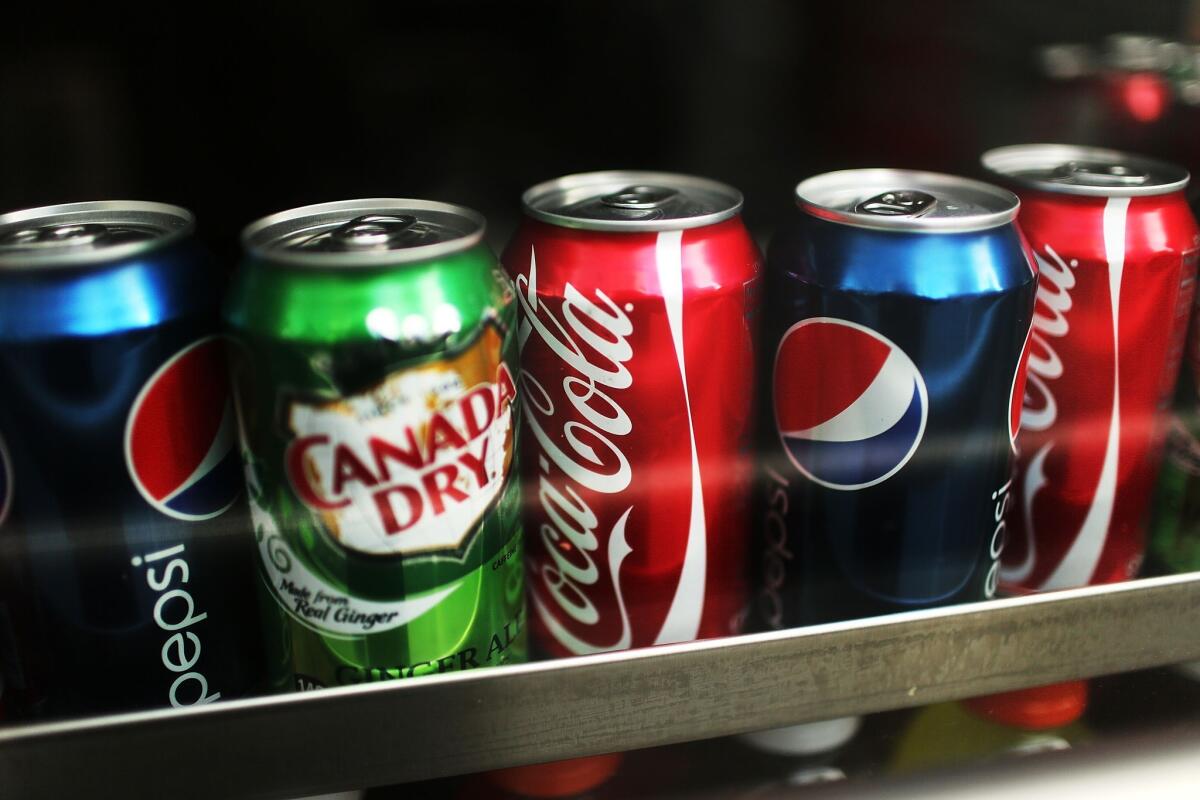Soda of future designed to trick taste buds into sweet submission

- Share via
The future of the soda industry may end up looking a lot like a science-fiction movie. It will involve the loss of real ingredients and the creation of virtual substances meant to manipulate and trick the mind.
PepsiCo is working with Senomyx, a biotech company based in San Diego, to create a taste modifier. The modifier is called S617 (I told you it sounded like a sci-fi movie), and it is designed to make you think you’re tasting more sugar than the actual amount in your drink.
This robot-sounding substance is a modifier designed to bind to “receptor cells” on taste buds that detect flavors to increase taste sensation. According to a Senomyx conference call, the modifier is capable of reducing up to 35% of the high fructose corn syrup and up to 50% of the sugar in tested prototypes.
It’s a big step to decrease the amount of sugar in the average soda. A 20-ounce bottle of Pepsi contains 69 grams of sugar. That’s the equivalent of sticking a teaspoon of sugar into your mouth just over 17 times.
In New York City, Mayor Michael Bloomberg has launched a campaign to pass a ban on large sizes of soda to alleviate rates of diabetes and obesity. And the campaigns to curb sugar consumption in New York and elsewhere in the U.S. seem to be working to some extent. According to Beverage Digest, soda sales are on a steady decline, with a 1.2% decrease in 2012.
“Getting new sweetener technology appears to be absolutely critical,” John Sicher, editor and publisher of Beverage Digest, told AdAge.com. “Whether these companies can get natural sweeteners that bring the calories way down and preserve good taste is really going to be what people are looking for over the next year or two.”
If approved for consumption, S617 could start showing up in products some time in 2014.
Want more science-related food news? Follow me on Twitter: @Jenn_Harris_
ALSO:
Twisted Sage Cafe is for lovers of bacon and fat breakfast burritos
How to meet guys: Q&A with Audrey Shulman of Sitting in Bars With Cake
Guest chefs at Alma, Sussmans at Huckleberry, ‘New California Wine’ tasting
More to Read
Eat your way across L.A.
Get our weekly Tasting Notes newsletter for reviews, news and more.
You may occasionally receive promotional content from the Los Angeles Times.










